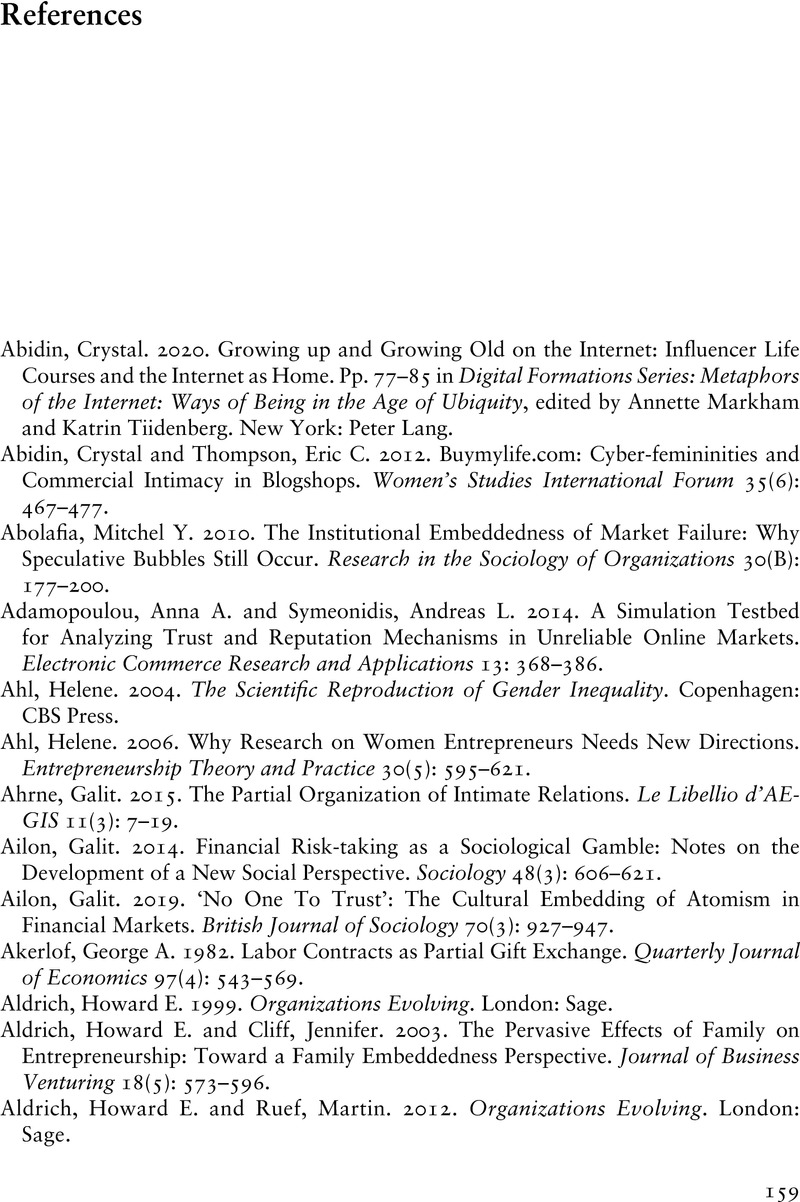Book contents
- Entrepreneurs in Contemporary China
- Entrepreneurs in Contemporary China
- Copyright page
- Dedication
- Contents
- Acknowledgements
- Introduction
- 1 E-Commerce
- 2 Making Social Networks
- 3 Trust, Broken Trust, and Trust Renegotiated
- 4 Family Business and Its Management
- 5 Female Entrepreneurs
- 6 Crisis as Opportunities
- Conclusion
- Appendix
- References
- Index
- References
References
Published online by Cambridge University Press: 24 August 2023
- Entrepreneurs in Contemporary China
- Entrepreneurs in Contemporary China
- Copyright page
- Dedication
- Contents
- Acknowledgements
- Introduction
- 1 E-Commerce
- 2 Making Social Networks
- 3 Trust, Broken Trust, and Trust Renegotiated
- 4 Family Business and Its Management
- 5 Female Entrepreneurs
- 6 Crisis as Opportunities
- Conclusion
- Appendix
- References
- Index
- References
Summary

- Type
- Chapter
- Information
- Entrepreneurs in Contemporary ChinaWealth, Connections, and Crisis, pp. 159 - 200Publisher: Cambridge University PressPrint publication year: 2023



